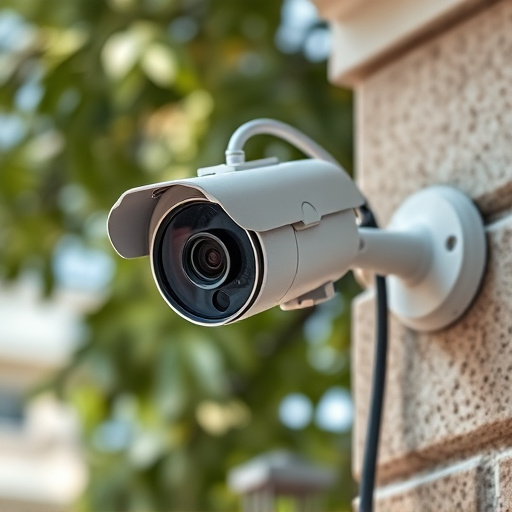Designing realistic security camera shells for outdoor installations requires understanding the needs of Installing Dummy Dome Camera Systems. These systems mimic real cameras with weatherproof materials like ABS and PVC that offer durability and a lifelike appearance. Strategic planning for installation includes hidden yet visible placement, adjustable mounting, and access panels for professional aesthetics while preserving authenticity and image quality through regular maintenance.
“Elevate your security with realistic security camera shell design, transforming dummy dome cameras into effective deterrents. This comprehensive guide explores the essential elements of designing and installing dummy dome camera systems. From understanding specific requirements to selecting durable materials, we provide insights for seamless integration. Learn about various design options that mimic genuine camera appearances and discover installation tips to ensure optimal performance. Optimize your security measures with these practical steps for installing realistic dummy dome cameras.”
- Understanding Dummy Dome Camera Requirements
- Design Options for Realistic Shell Appearance
- Material Selection and Durability Considerations
- Installation Tips for Seamless Integration
Understanding Dummy Dome Camera Requirements
When designing a realistic security camera shell, understanding the requirements for Installing Dummy Dome Camera Systems is paramount. These systems mimic real cameras, serving as decoys to deter potential thieves or vandals. Key considerations include the camera’s visual realism—from the dome’s shape and texture to the lens detail—ensuring it blends seamlessly with genuine security equipment. Additionally, these dummy cameras must be sturdy enough to withstand outdoor conditions, with weatherproofing features built-in to prevent damage from elements like rain or extreme temperatures.
The functionality goes beyond aesthetics. Dummy dome cameras should feature precise placement options, allowing for realistic mounting angles and positions. This includes adjustable components that mimic the movement of a real camera, further enhancing their realism. Moreover, the systems must be easy to install, often requiring minimal tools and simple attachments, ensuring that even non-professionals can quickly set them up without complex wiring or extensive configuration.
Design Options for Realistic Shell Appearance
When designing a realistic security camera shell, the options are vast, allowing for creative and functional solutions. One popular approach is to emulate the look of a real dome camera system. These designs often feature a curved or rounded shape, mimicking the traditional dome housing, providing a convincing visual match while offering enhanced protection for the internal components.
Installing dummy dome camera systems can be an effective security measure in itself, as potential intruders may assume the presence of active surveillance equipment. The realistic shell design not only adds an extra layer of deterrence but also allows for seamless integration into various environments, from residential properties to commercial buildings, ensuring a discreet and aesthetically pleasing security solution.
Material Selection and Durability Considerations
When designing a realistic security camera shell, material selection is paramount. The ideal material should offer exceptional durability against harsh weather conditions, theft attempts, and vandalism while maintaining a lifelike appearance. High-quality plastics, such as ABS or PVC, are popular choices due to their resilience, light weight, and ability to mimic the look of real metal or glass. These materials can withstand extreme temperatures, impact, and UV radiation exposure, ensuring longevity even in challenging outdoor environments where Installing Dummy Dome Camera Systems is common.
Additionally, considering the shell’s structural integrity and impact resistance is crucial for preventing damage during transportation and installation. Reinforced ribbing or internal frames within the shell design can significantly enhance durability. This becomes especially important when designed to look like real camera systems, as they often face frequent movement during setup and exposure to various elements, requiring materials that can stand the test of time and maintain their realistic appearance over years of use.
Installation Tips for Seamless Integration
When installing dummy dome camera systems, it’s crucial to plan for seamless integration that blends with your environment. Start by selecting a location that offers optimal visibility while remaining hidden from view. Mounting height and angle are critical; ensure they align with your surveillance needs without drawing unnecessary attention. Use mounting brackets compatible with your chosen shell design to achieve a secure fit.
For a professional finish, consider using access panels or false ceilings to hide the camera’s base. This approach not only enhances aesthetics but also protects the device from weather and potential tampering. Regular cleaning and maintenance are essential to keep the camera looking realistic. Use products that match the shell material to maintain authenticity while preserving image quality.
Realistic security camera shell design is not just about aesthetics; it ensures seamless integration and effective surveillance. By understanding specific requirements, exploring design options, selecting durable materials, and mastering installation techniques, you can deploy dummy dome camera systems that blend seamlessly into any environment, providing both peace of mind and robust security. Installing these systems thoughtfully enhances overall safety without compromising visual appeal.
